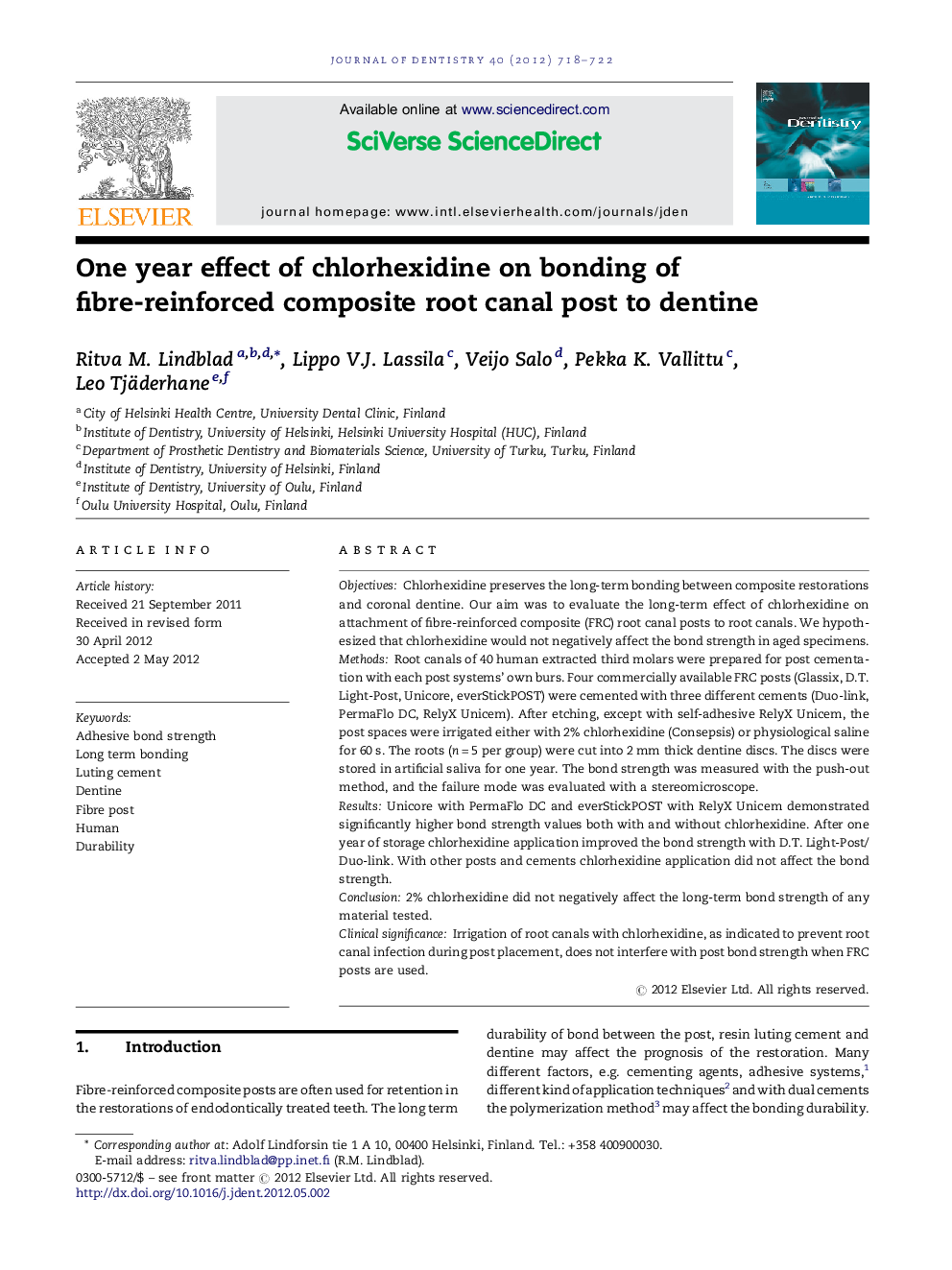| Article ID | Journal | Published Year | Pages | File Type |
|---|---|---|---|---|
| 3145861 | Journal of Dentistry | 2012 | 5 Pages |
ObjectivesChlorhexidine preserves the long-term bonding between composite restorations and coronal dentine. Our aim was to evaluate the long-term effect of chlorhexidine on attachment of fibre-reinforced composite (FRC) root canal posts to root canals. We hypothesized that chlorhexidine would not negatively affect the bond strength in aged specimens.MethodsRoot canals of 40 human extracted third molars were prepared for post cementation with each post systems’ own burs. Four commercially available FRC posts (Glassix, D.T. Light-Post, Unicore, everStickPOST) were cemented with three different cements (Duo-link, PermaFlo DC, RelyX Unicem). After etching, except with self-adhesive RelyX Unicem, the post spaces were irrigated either with 2% chlorhexidine (Consepsis) or physiological saline for 60 s. The roots (n = 5 per group) were cut into 2 mm thick dentine discs. The discs were stored in artificial saliva for one year. The bond strength was measured with the push-out method, and the failure mode was evaluated with a stereomicroscope.ResultsUnicore with PermaFlo DC and everStickPOST with RelyX Unicem demonstrated significantly higher bond strength values both with and without chlorhexidine. After one year of storage chlorhexidine application improved the bond strength with D.T. Light-Post/Duo-link. With other posts and cements chlorhexidine application did not affect the bond strength.Conclusion2% chlorhexidine did not negatively affect the long-term bond strength of any material tested.Clinical significanceIrrigation of root canals with chlorhexidine, as indicated to prevent root canal infection during post placement, does not interfere with post bond strength when FRC posts are used.
